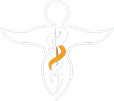Lower back pain (LBP) is one of the most common health problems, affecting nearly 80% of people at some point in their lives. It can vary from a dull ache to intense pain that limits daily movement and quality of life.
Common Symptoms
- Muscle strain: Often due to lifting or twisting the wrong way, leading to tightness and soreness.
- Herniated or bulging discs: Pressure on spinal nerves can cause sharp pain or sciatica down the legs.
- Degenerative disc disease: Age-related wear causes chronic stiffness or pain.
- Spinal stenosis: Narrowing of the spinal canal, often causing pain while walking or standing.
When to See a Doctor
See a doctor if your lower back pain:
- Lasts longer than a few weeks
- Spreads to the legs or below the knees
- Comes with weakness, numbness, or tingling
- Is accompanied by weight loss, fever, or bladder problems
How Lower Back Pain is Diagnosed
- Medical History & Physical Exam: Helps identify the source of the pain and any limitations in movement.
- Imaging Tests: X-rays, MRI, or CT scans are used to check for structural issues like disc herniation or arthritis.
- Nerve & Blood Tests: EMG tests assess nerve function; blood tests rule out infections or inflammation.
Treatment Options
1. Self-Care and Lifestyle Changes
- Stay active: Avoid bed rest. Gentle movement helps reduce stiffness and promote healing.
- Cold and heat therapy: Use ice packs in the first 48 hours, then switch to heat for tight muscles.
- Improve posture: Sit and lift correctly to reduce strain on the spine.
2. Medications
- NSAIDs: Over-the-counter anti-inflammatory drugs like ibuprofen can help with pain and swelling.
- Muscle relaxants: Used for short-term relief of muscle spasms.
- Topical treatments: Creams and patches may provide localized relief.
3. Physical & Complementary Therapy
- Exercise therapy: Stretching, yoga, and core strengthening exercises aid recovery.
- Physical therapy: Tailored treatment plans improve mobility and reduce pain.
- Chiropractic care and massage: Can help relieve tension and restore alignment.
- Mind-body techniques: CBT and mindfulness reduce stress and help manage chronic pain.
4. Injections and Surgery
- Steroid injections: Reduce inflammation and provide temporary relief for nerve-related pain.
- Surgical options: Considered only when other treatments fail or if there are serious neurological issues.
Helpful Summary Table
| Step | Strategy |
|---|---|
| 1 | Stay active and use proper posture |
| 2 | Use medications as needed (NSAIDs, muscle relaxants) |
| 3 | Engage in physical and mind-body therapy |
| 4 | Consider injections or surgical options if needed |
Final Tips
Most people recover from lower back pain with simple self-care and time. If pain lasts more than a few weeks or limits your activity, don’t hesitate to seek professional care. Early treatment helps prevent chronic issues and keeps you moving strong.
